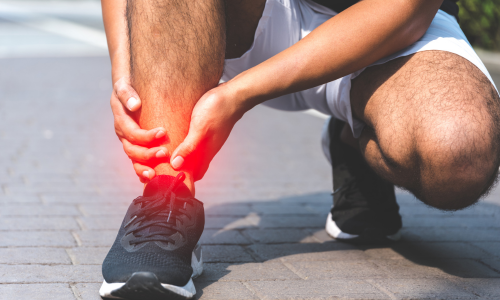Sprain/ Strain
Sprain/ Strain
Understanding Sprains and Strains: Causes, Symptoms, and Treatment
Introduction:
Sprains and strains are common injuries that can occur during daily activities, sports, or accidents. While they may seem similar, understanding the differences between sprains and strains is crucial for proper diagnosis and treatment. This article provides comprehensive information about sprains and strains, including their causes, symptoms, and treatment options.
- What are Sprains and Strains?
- Sprains: A sprain occurs when a ligament, the tissue that connects bones to each other, is stretched or torn. This typically happens due to sudden twisting or wrenching movements.
- Strains: Strains involve the stretching or tearing of muscles or tendons, the fibrous cords that attach muscles to bones. Strains often result from overexertion, improper lifting, or repetitive movements.
- Causes of Sprains and Strains:
- Sprains: Common causes of sprains include sports injuries, falls, sudden twists, and impacts.
- Strains: Strains can occur due to activities that require repetitive motion, lifting heavy objects improperly, or sudden forceful movements.
- Symptoms:
- Sprains: Symptoms of a sprain include pain, swelling, bruising, limited range of motion, and sometimes a popping sensation at the time of injury.
- Strains: Symptoms of a strain may include muscle spasms, pain, swelling, weakness, and difficulty moving the affected area.
- Diagnosis:
- Both sprains and strains are typically diagnosed based on a physical examination, medical history, and sometimes imaging tests such as Xrays or MRI scans to assess the extent of the injury.
- Treatment Options:
- Rest: Resting the affected area is essential for allowing the tissues to heal properly.
- Ice: Applying ice packs to the injured area helps reduce swelling and pain.
- Compression: Wrapping the affected area with an elastic bandage helps control swelling and provides support.
- Elevation: Elevating the injured limb above heart level helps reduce swelling.
- Medications: Overthecounter pain relievers such as ibuprofen or acetaminophen may help alleviate pain and inflammation.
- Physical Therapy: Rehabilitation exercises and stretches can help restore strength, flexibility, and range of motion.
- Immobilization: Severe sprains or strains may require bracing or splinting to immobilize the injured area and facilitate healing.
- Surgery: In rare cases where there is severe ligament or tendon damage, surgery may be necessary to repair the injury.
- Prevention:
- Warmup: Always warm up before engaging in physical activity to prepare muscles and ligaments for exertion.
- Proper Technique: Use proper techniques when lifting heavy objects or participating in sports to avoid undue strain on muscles and ligaments.
- Strength and Flexibility: Regular exercise programs that include strength training and flexibility exercises can help prevent sprains and strains by improving muscle strength and resilience.
- Protective Gear: Wearing appropriate protective gear, such as helmets, knee pads, or supportive footwear, can help reduce the risk of injury during sports or recreational activities.
Conclusion:
Sprains and strains are common injuries that can occur in people of all ages and activity levels. Understanding the causes, symptoms, and treatment options for these injuries is essential for prompt and effective management. By following preventive measures and seeking proper medical attention when needed, individuals can reduce the risk of sprains and strains and promote faster recovery.

Book an Appointment
Physiotherapy: Your Path to Pain Relief
Physiotherapists are movement experts who can help manage and reduce pain. Through manual therapy, exercise programs, and education, they can improve your mobility and function, empowering you to live an active, pain-free life.
